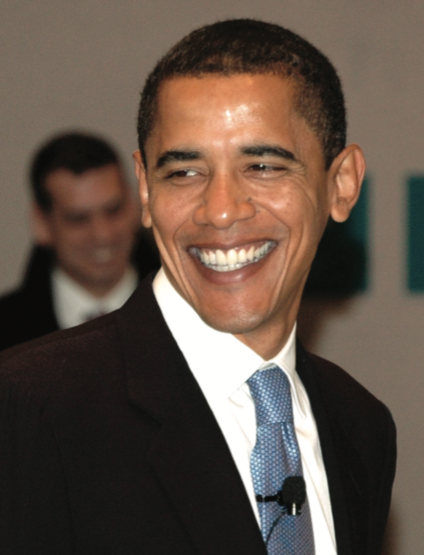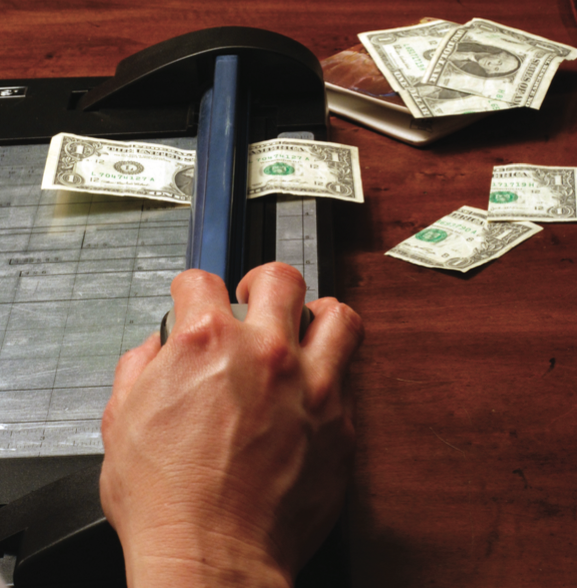Beirut SE (1 month)
Current Year High: 3,470.63 Current Year Low: 1,761.53

The Beirut Stock Exchange felt the influence of international markets just like anyone else. Liquidity and share volumes dried up towards the end of the review period and the BLOM Stock Index ended at 1402.88 points on Oct 24, some 19% down from 1732.24 on the final close Sep 29 before the observation of the Eid al Fitr holidays. Solidere shares had another difficult month and closed at $21 and $21.06 for the two share classes on Oct 24, about one fourth down from their valuations at the start of October. Banking shares declined to $70 for Audi and $83.5 for BLOM, although the banking sector reported improved third-quarter results, which were impervious to the financial markets epidemic that decimated global banking income. The Lebanese banks remained bright because they were barred by the central bank from speculating in derivatives and real estate — and because they never were subjected to strong pressure for finding risky products as long as they could do well with investing in Lebanese sovereign debt instruments. What was seen over years as the banks’ risky over-exposure to T-Bills and eurobonds now looks a lot saner.
Amman SE (1 month)
Current Year High: 5,043.72 Current Year Low: 3,351.01

Distress in motion also on the Amman Stock Exchange. The ASE general index closed at 3117.07 points on Oct 26, representing a 23.36% weakening when compared with the last close in September. Selling of industrial stocks — much of it attributed to foreign investors — supplied the weight that pulled the market down but the insurance, banking, and services sub-indices all also headed south, albeit less than the general index. Local analysts said the market provides exceptional buying opportunities for those who can afford to enter but cautioned that it may be quite a while before share prices recover the losses of the recent fear phase.
Abu Dhabi SM (1 month)
Current Year High: 5,148.49 Current Year Low: 3,133.51

The UAE markets couldn’t cling to the notion of having a persistent real estate boom and living in splendid isolation from the financial world crisis. In Abu Dhabi, real estate was beaten down 23.55%, leading all sectors into the valley. The general index moved down 6.56% but that was by Oct 23, with no telling how much the bloodletting would still swell to by the end of this month, and in weeks thereafter. Signals sent by the leading global markets were scary as October entered into its final days, and the price to earnings ratio of the Abu Dhabi Securities Market headed below a 9x, a multiple that should bait buyers like an artificial fly attracts a hungry trout.
Dubai FM (1 month)
Current Year High: 6,291.87 Current Year Low: 3,025.08

The ease of autumn that returns Dubai to a place where one can revel outdoors and enjoy walks in the old souks also came, however, with a shocking fall in equities. Much has been said about a confidence crisis in global markets, and confidence in the Dubai market has been eroded more than one would have believed possible as the DFM general index wilted with a 24.8% slide to its close of 3102.65 points on the evening of Oct 26, which translates into a 47.7% drop from the start of the year. As if that were necessary, a look back by 12 months can illustrate the size of the malaise further: in the same period a year ago, the DFM index ascended 17.2% and was knocking at the door of 5,000 points. One can and should note, however, that apart from the rude awakening of the real estate mirage, the UAE economy is much better than the paucity of confidence lets on.
Kuwait SE (1 month)
Current Year High: 15,654.80 Current Year Low: 10,804.40

The Kuwait Stock Exchange Index, dropping 18.4% from Oct 1 to 23, was in the group of the GCC’s worst performers together with the Dubai Financial Market and the Doha Securities Market in the review period. The KSE index closed at 10,481.10 points on Oct 23. Local analysts lamented that the bourse’s weakening was exaggerated and that “the panic has to stop.” Panic was among the most widely used words in international stock market comments during the month – however, as much as investor psyche and overshooting due to fears contributed to the downturn, the term panic could do with some clarification. The individual investor decisions in the current situation may be rational by the person’s interests and ad-hoc needs – which is not an attribute of a panicked mind. The damage is the accumulation of self-interest that defies the economy’s purpose, and thus damages the interests of the very persons that acted individually in pursuit of their own self-interests.
Saudi Arabia SE (1 month)
Current Year High: 11,895.47 Current Year Low: 5,794.87

There is really no point in reporting time-based performance or trying to make sense of any numbers in stock markets during the month of October 2008. What was up one day by 4% can be down 9% the next, or moving at the limit one way or another. Markets that were the worst performer of the month yesterday have been outdone in negative sentiment by another bourse the next afternoon, leaving the single day and the current moment the only relevant events. The Saudi Stock Exchange recorded a massive fall on Oct 25, after world markets drowned in negative sentiments a day before, but other regional markets were spared the dip momentarily because of their Friday/Saturday closures. Limit-down was the direction of roughly one third of the SSE’s 125 listed companies on this day. In the longer vision lines, the SSE lost 16.38% from the start of October and more than 52% of its value when comparing with the year high it reached in January.
Muscat SM (1 month)
Current Year High: 12,109.10 Current Year Low: 6,626.94

Spicy trading peppered with excessive volatility was the market scent also on the Muscat Securities Market. The general index’s 21.2% drop from the start of the month to October 26 was shadowed by all sub-indices. However, the industrial index was the underperformer of the month, ending the period 28.89% down. In daily reports on the MSM by a financial news provider, the R word and three ways of writing fear provided minimal variation and zero consolation regarding market moods, although recession is still no specter for any GCC country. Thus, the tale of the MSM was no altercation from the experiences of other GCC markets in October — fallout from global fears but not a meltdown of local profits were given the blame for driving investors into the abyss, like the Asian proverb of the herd that swerves if the lead bull swerves without reason.
Bahrain SE (1 month)
Current Year High: 2,902.68 Current Year Low: 2,309.12

The Bahrain Stock Exchange was exposed to less volatility — at least during this review period — than other markets in the area but it gave up 10% since the start of October and its year-to-date record, down almost 20%, is a solid disappointment. The BSE closed its Oct 23 session at 2,290.69 points. Banking and investment companies underperformed the market. Banking stocks at the bottom end of market developments included banks Salam Khaleej, and Ithmaar. Gulf Finance House and Esterad Investment Company were at the bottom of the tally, closing down 18.59% and 20.90%, respectively — Esterad’s stock gave up 9.40% a day after the company announced that it had swung from a $4.5 million profit in Q3 2007 to a BHD $20 million loss in the third quarter of 2008.
Doha SM (1 month)
Current Year High: 12,627.32 Current Year Low: 7,029.95

Volatility of 5.42% and a precipitous decline of 20.45% from the start of October to a close at 6,892.95 points on Oct 26 are the fever readings of the Doha Securities Market, according to the Zawya thermometer. The DSM’s curve of pain included a single-day fall of 8.93% on Oct 26, which wiped out gains made between Oct 12 and 21. Qatar Cinemas was star performer of the month, giving up a mere 0.9% of its value. Real estate developer QREIC and Doha Insurance Company hurt the most, as they each saw 42.6% erased from their share prices. While their price performance during the review period was comparable, the two companies significantly diverged in their interim earnings announcements — DIC reported 44.5% higher nine-month figures whereas QREIC said its earnings contracted by some 15%.
Tunis SE (1 month)
Current Year High: 3,418.13 Current Year Low: 2,516.22

The Tunisian Stock Market index tumbled 11.39% in October, closing 2,979.22 points on Oct 24. The market’s single gainers were Union Bancaire pour le Commerce et l’Industrie, which advanced 1.45% and glass manufacturer Sotuver, which edged 1% higher. In its second full month of trading, newcomer Poulina lost 14% since the start of October. Financial services firm Tunisie Leasing and Assad, a battery maker, were the biggest victims of downward pressure, dropping 21.5% and 24.9%, respectively, over the period.
Casablanca SE (1 month)
Current Year High: 14,925.99 Current Year Low: 11,971.33

It looks as if Rick has finally cashed the profit from his Café Americaine and gotten out of the Casablanca market. The Casablanca Stock Exchange saw its second consecutive month of slippage and ended the October 24 session below 12,000 points, at 11,935.46, to be precise. Representing a 4.42% weakening in the review period, the Moroccan bourse was reading almost 6% lower on the year. However, the P/E ratio of 20.05x is the highest in the region on the Oct 25/26 weekend, keeping Moroccan stocks at valuation ranges from where the average P/E ratios of GCC bourses have long departed.
Egypt CASE (1 month)
Current Year High: 11,935.67 Current Year Low: 5,112.29

Confidence is hard to gain, easily wasted, and much harder to regain. The Cairo and Alexandria Stock Exchanges had seen shaky investor trust wane already in spring, making the onslaught of global confidence problems ever more difficult to bear. The negative performance of CASE between the last session in September and the first day of action after the Eid Al Fitr holidays only accelerated later in October and drove the index a massive 35.34% lower between Sep 29 and Oct 26 when the CASE 30 closed at 4,564.18 points. Sector heavyweights Orascom Construction and Orascom Telecom Holding reached 37.12% and 27.08% lower, while investment bank EFG Hermes Holding lost 35.27%. However, there were three smaller stocks with market cap between $8 and $60 million apiece, which were reduced to market dust by share price losses of between 69 and 93% in the review period of less than a month.






